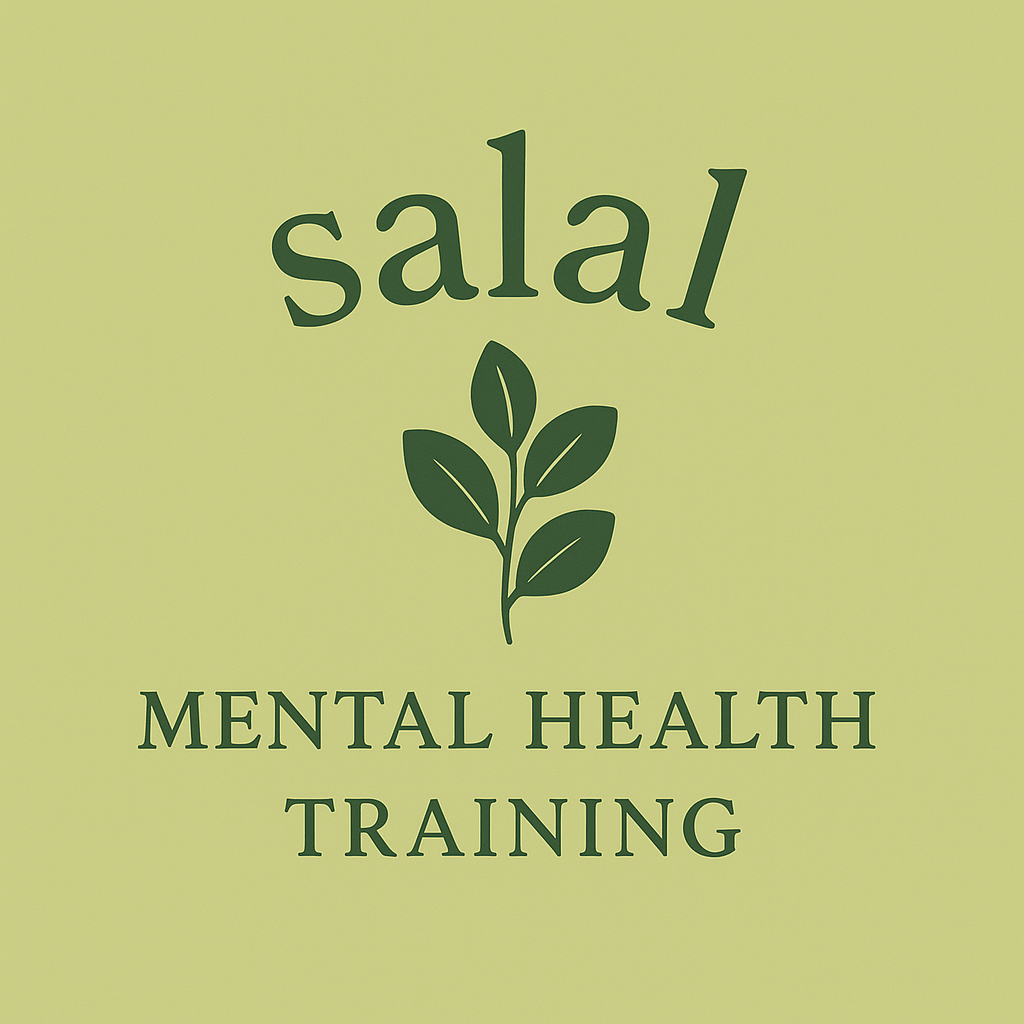Understanding Mental Health First Aid Essentials
- Salal Mental Health Training

- Sep 16
- 4 min read
Updated: Sep 22
Mental health is a vital part of our overall well-being. Just like physical health, it requires attention, care, and sometimes immediate support. Knowing how to respond when someone is struggling can make a real difference. That’s why understanding mental health safety essentials is so important. It helps create safer, more supportive environments in workplaces, schools, and community organizations across British Columbia.
Why Mental Health Safety Essentials Matter
Mental health challenges can affect anyone, at any time. Stress, anxiety, depression, and other conditions may not always be visible, but their impact is very real. When we understand mental health safety essentials, we become better equipped to notice signs of distress and offer timely help.
For example, in a busy workplace, a colleague might suddenly seem withdrawn or unusually irritable. Recognizing these changes early can prevent a crisis. Schools and community groups also benefit from having clear mental health safety practices. They promote a culture where people feel safe to speak up and seek support.
By learning these essentials, you contribute to reducing stigma. You help build a community where mental health is treated with the same care as physical health. This creates a more inclusive and compassionate environment for everyone.

Key Components of Mental Health Safety Essentials
Understanding mental health safety involves several important components. Each plays a role in creating a supportive environment:
Awareness: Knowing the common signs and symptoms of mental health issues. This includes changes in mood, behavior, or communication.
Communication: Learning how to talk about mental health in a respectful and non-judgmental way. This encourages openness.
Support: Offering practical help and emotional support without trying to fix the problem yourself.
Resources: Being aware of local mental health services and how to connect people with professional help.
Prevention: Promoting healthy habits and stress management techniques to reduce the risk of mental health problems.
For instance, a community organization might hold regular workshops on stress reduction or mindfulness. A school could implement peer support programs where students help each other recognize and manage mental health challenges.
These components work together to create a safety net. They ensure that when someone struggles, they are met with understanding and appropriate assistance.

What are the 5 steps of mental health first aid?
Knowing the five steps of mental health first aid can guide your response when someone needs help. These steps provide a clear, practical approach:
Approach, assess, and assist with any crisis
Approach the person calmly and safely. Check if they are in immediate danger or need urgent help.
Listen non-judgmentally
Give your full attention. Let them share their feelings without interrupting or judging.
Give support and information
Offer reassurance and let them know they are not alone. Share helpful information about mental health.
Encourage appropriate professional help
Suggest they seek support from a mental health professional or other trusted resources.
Encourage self-help and other support strategies
Help them identify ways to manage their mental health, such as exercise, relaxation, or connecting with friends.
These steps are designed to be simple and effective. They empower you to provide immediate care while respecting the person’s dignity and autonomy.

How to Implement Mental Health Safety in Your Organization
Implementing mental health safety essentials requires commitment and planning. Here are some practical tips to get started:
Provide training: Offer certified mental health first aid courses to staff, teachers, or volunteers. Training builds confidence and skills.
Create clear policies: Develop guidelines that support mental health, including how to handle crises and protect privacy.
Promote open dialogue: Encourage conversations about mental health through meetings, newsletters, or events.
Build partnerships: Connect with local mental health organizations for resources and support.
Monitor and evaluate: Regularly review your mental health initiatives to ensure they meet the needs of your community.
For example, a workplace might schedule quarterly mental health workshops and create a quiet room for employees to decompress. Schools can integrate mental health education into their curriculum and provide access to counselors.
By taking these steps, organizations foster a culture of care and resilience. This benefits everyone by reducing stress and improving overall well-being.
Supporting Someone in Distress: Practical Tips
When someone is struggling, your support can be a lifeline. Here are some gentle, practical ways to help:
Be present: Sometimes just being there and listening is enough.
Use simple language: Avoid medical jargon or assumptions about their experience.
Respect boundaries: Let them decide how much to share and what kind of help they want.
Encourage small steps: Suggest manageable actions like taking a walk or calling a friend.
Follow up: Check in later to show you care and offer ongoing support.
Remember, you are not expected to be a therapist. Your role is to provide initial care and guide them toward professional help if needed.
By practicing these tips, you create a safe space where people feel valued and understood.
Moving Forward with Confidence and Compassion
Understanding mental health safety essentials is a powerful way to make a positive impact. It equips you to recognize signs of distress, respond with kindness, and connect people to the help they need.
If you want to deepen your knowledge, consider holding a mental health first aid course. These programs offer practical skills and certification that can benefit your entire community.
Together, we can build supportive, stigma-free environments across British Columbia. Every step you take toward mental health safety helps create a stronger, healthier community for all.
Thank you for taking the time to learn about these important essentials. Your commitment makes a difference.



Comments